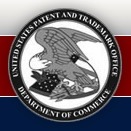Three Apple patents involving video encoders, data storage systems and electronic devices have appeared at the US Patent & Trademark Office. Following is a summary of each.
Patent number 7,822,118 is for a method and apparatus for control of rate-distortion tradeoff by mode selection in video encoders. The system of the present invention first selects a distortion value D near a desired distortion value. Next, the system determines a quantizer value Q using the selected distortion value D. The system then calculates a Lagrange multiplier lambda using the quantizer value Q. Using the selected Lagrange multiplier lambda and quantizer value Q, the system begins encoding pixelblocks. If the system detects a potential buffer overflow, then the system will increase the Lagrange multiplier lambda. If the Lagrange multiplier lambda exceeds a maximum lambda threshold then the system will increase the quantizer value Q. If the system detects a potential buffer underflow, then the system will decrease the Lagrange multiplier lambda. If the Lagrange multiplier lambda falls below a minimum lambda threshold then the system will decrease the quantizer value Q. The inventors are Barin Geoffry Haskell, Andriana Dumitras and Atul Puri.
Patent number 7,822,922 involves accessing data storage systems without waiting for read errors. Improved techniques for accessing data storage systems are disclosed. These techniques detect, correct and prevent undesirable access delays experienced in storage systems. “Slow-access” refers to an access operation that does not successfully complete within a predetermined amount of time. When slow-access is detected, an attempt is made to provide data by other means rather than waiting for the access operation to eventually complete. By way of example, parity information is used to generate data rather than waiting beyond a predetermined amount of time for a “slow-read” operation to complete. In addition, preventative measures can be taken to avoid reoccurrence of a “slow-access” operating once it has been identified. These preventative measures, for example, include rewriting the same data to the same data section that caused the slow-access problem or remapping the section to another section in order to avoid the same section of data to cause another slow access problem. The inventors are Michael Eng, David Wong and Lamont Benaresh.
Patent number 7,823,214 is for accessory authentication for electronic devices. Improved techniques to control utilization of accessory devices with electronic devices are disclosed. The improved techniques can use cryptographic approaches to authenticate electronic devices, namely, electronic devices that interconnect and communicate with one another. One aspect pertains to techniques for authenticating an electronic device, such as an accessory device. Another aspect pertains to provisioning software features (e.g., functions) by or for an electronic device (e.g., a host device). Different electronic devices can, for example, be provisioned differently depending on different degrees or levels of authentication, or depending on manufacturer or product basis. Still another aspect pertains to using an accessory (or adapter) to convert a peripheral device (e.g., USB device) into a host device (e.g., USB host). The improved techniques are particularly well suited for electronic devices, such as media devices, that can receive accessory devices. One example of a media device is a media player, such as a hand-held media player (e.g., music player), that can present (e.g., play) media items (or media assets). The inventors are Jonathan Jake Rubinstein, Anthony M. Fadell, Jesse L. Dorogusker, Mitchell Adler and John Wesley Archibald.

